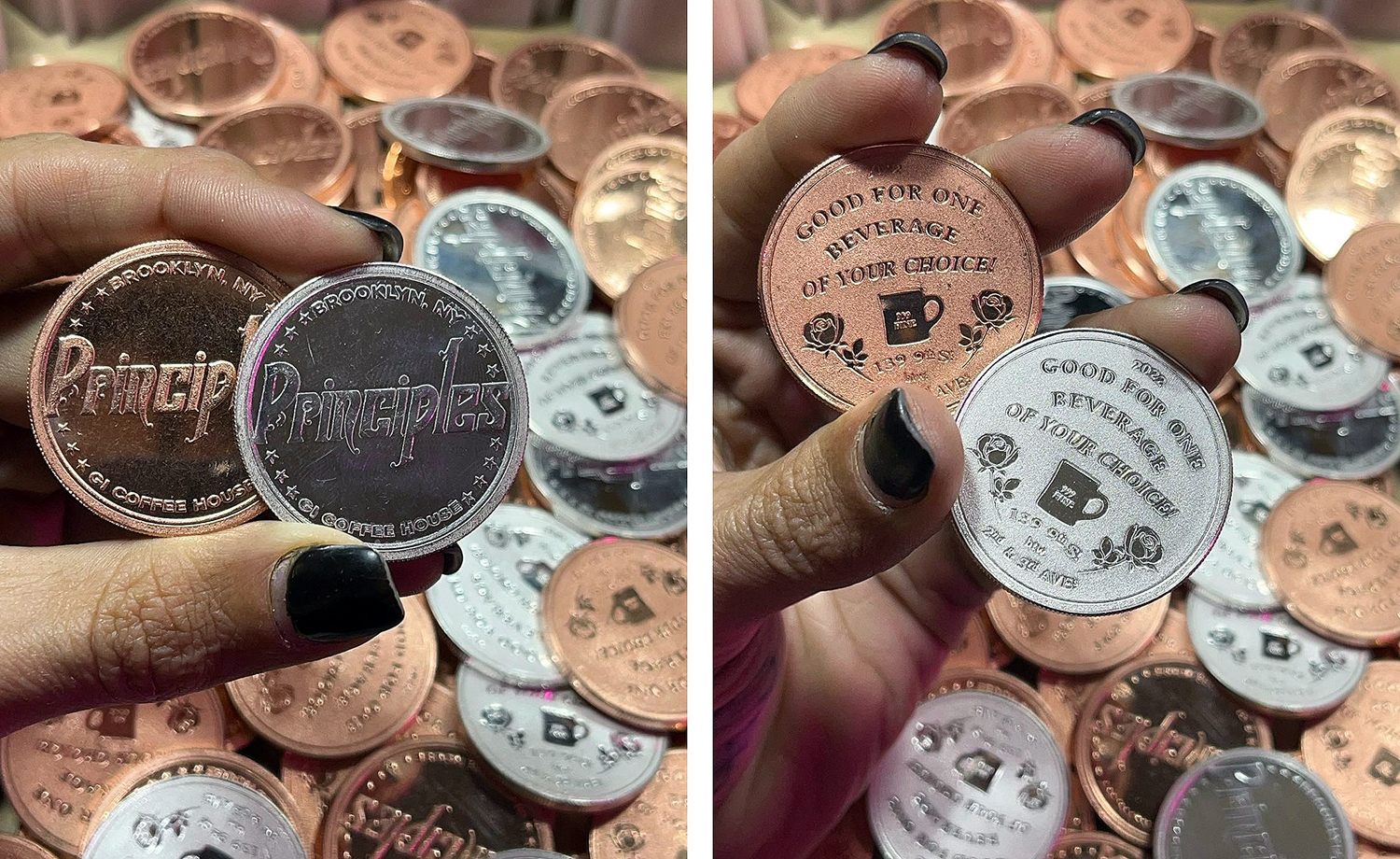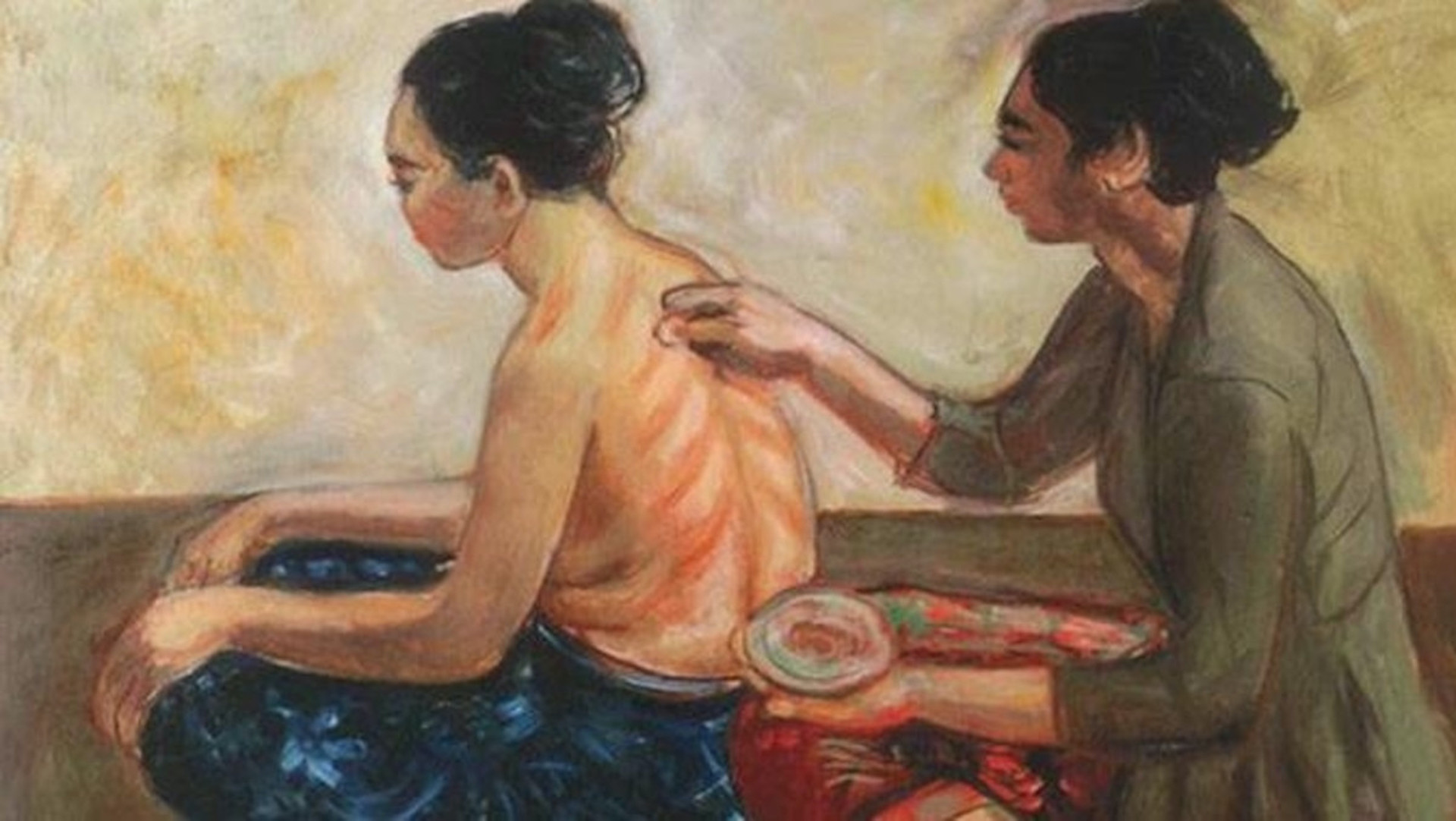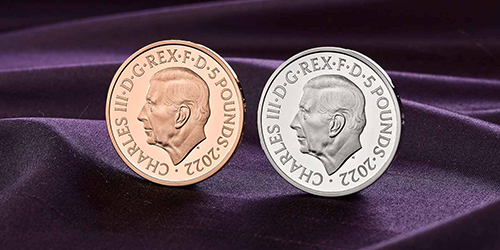World War II Barter Kits
A researcher’s inquiry recently got me thinking about an interesting item I’d once found in a pile of unprocessed materials in the ANS Library. It was an auction catalog put out by a division of the U.S. Department of Defense to sell World War II escape & evasion kits, also called barter kits.

These kits, each containing a handful of gold objects, including coins, were, according to the catalog, “issued to pilots and paratroopers to barter their way out of difficult situations if they were downed in unfriendly territory.” Reportedly, none were ever used for this purpose, so the kits were gathered and shipped off to the New York Assay Office, where they sat until 1979, when they were offered for sale in this auction.

Two kinds of kits were issued, one for the Atlantic region, containing gold rings, half- and one-pound gold sovereigns, and twenty- and ten-franc gold coins, and one for Southeast Asia, containing gold rings, a gold embossed pendant, a gold four-linked chain, and a 21-jewel Swiss calendar watch. The Asia kit was housed in a plastic container which could easily be opened. The Atlantic kit presented a bit more of a challenge, requiring, it was reported, “cryogenics (freezing) or industrial acetone” to get at its contents. Winning bidders were assured that they’d be furnished with “comprehensive opening information.”

Three initial sales were held in 1979 and 1980, and they generated quite a bit of interest, including in the numismatic world, with Coin World providing extensive coverage. In fact, the government’s run of 12,000 catalogs for the second sale quickly ran out. Part of the excitement came from volatile swings in the price of gold, which stood at $256.50 an ounce when the first sale was announced, then climbed to $900, before falling to $508 by the time of the third sale in 1980. Luckily for the government, minimum bids had been keyed to the price of gold, leading to many bid disqualifications as they were unsealed.
Three hundred and fifty kits, about ten percent of the total number, were offered for the first sale, which drew 1,450 bidders. For the second auction, nearly three thousand kits were sold. The three big sales generated $2.6 million for the government. The top bid was $4,000, and the average was about $900 per kit. The kits originally cost an estimated $30 each. A fourth and final sale of the remaining 325 kits was announced in the pages of Coin World in 1981. Many of the kits remain intact today and they are still prized as collectibles.
For more, see Coin World, January 2, 1980 (p.10); June 20, 1979 (p.1); January 23, 1980 (p.14); February 20, 1980 (p.3); January 28, 1981 (p.3); March 15, 1989 (p.14).




